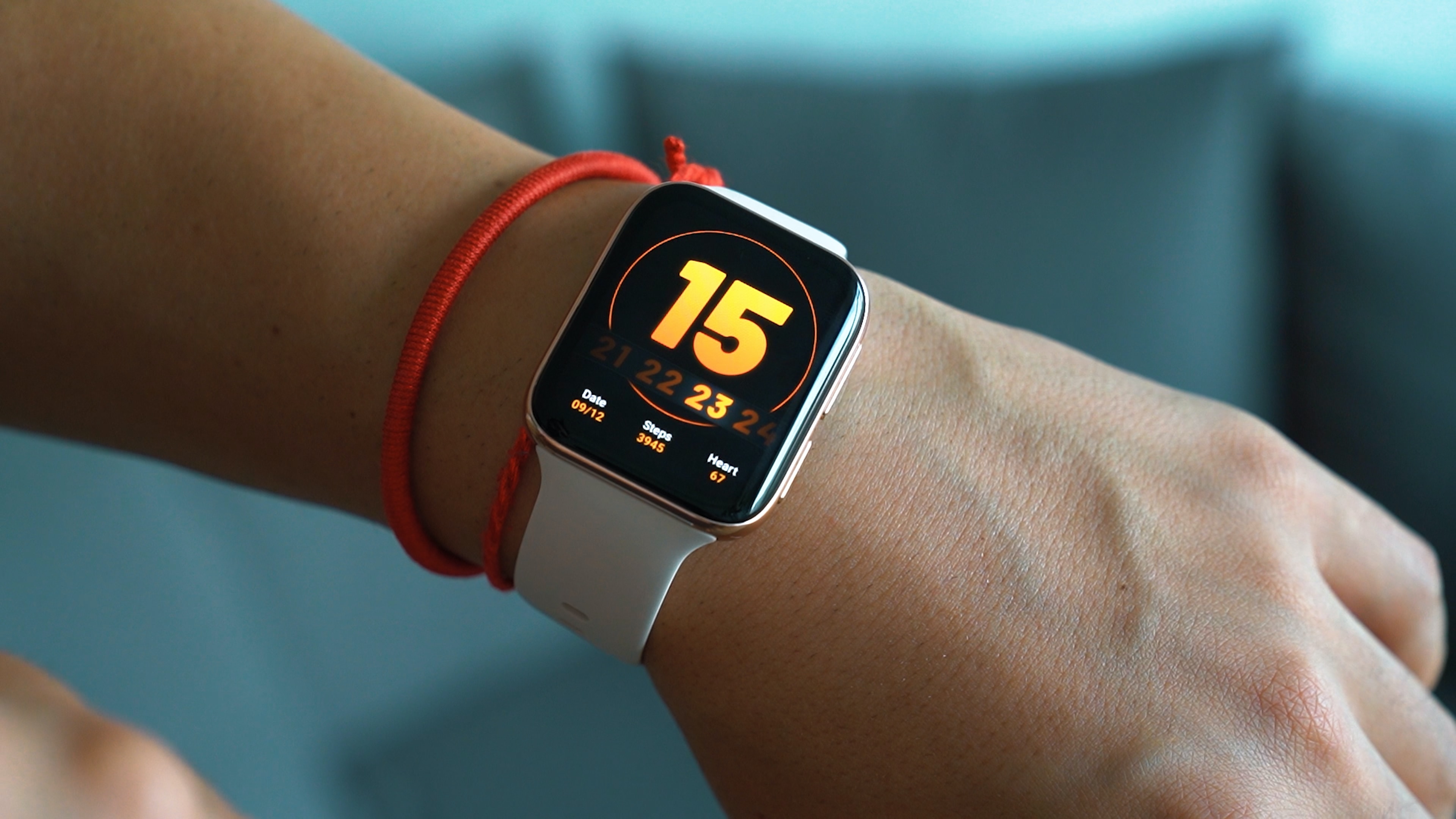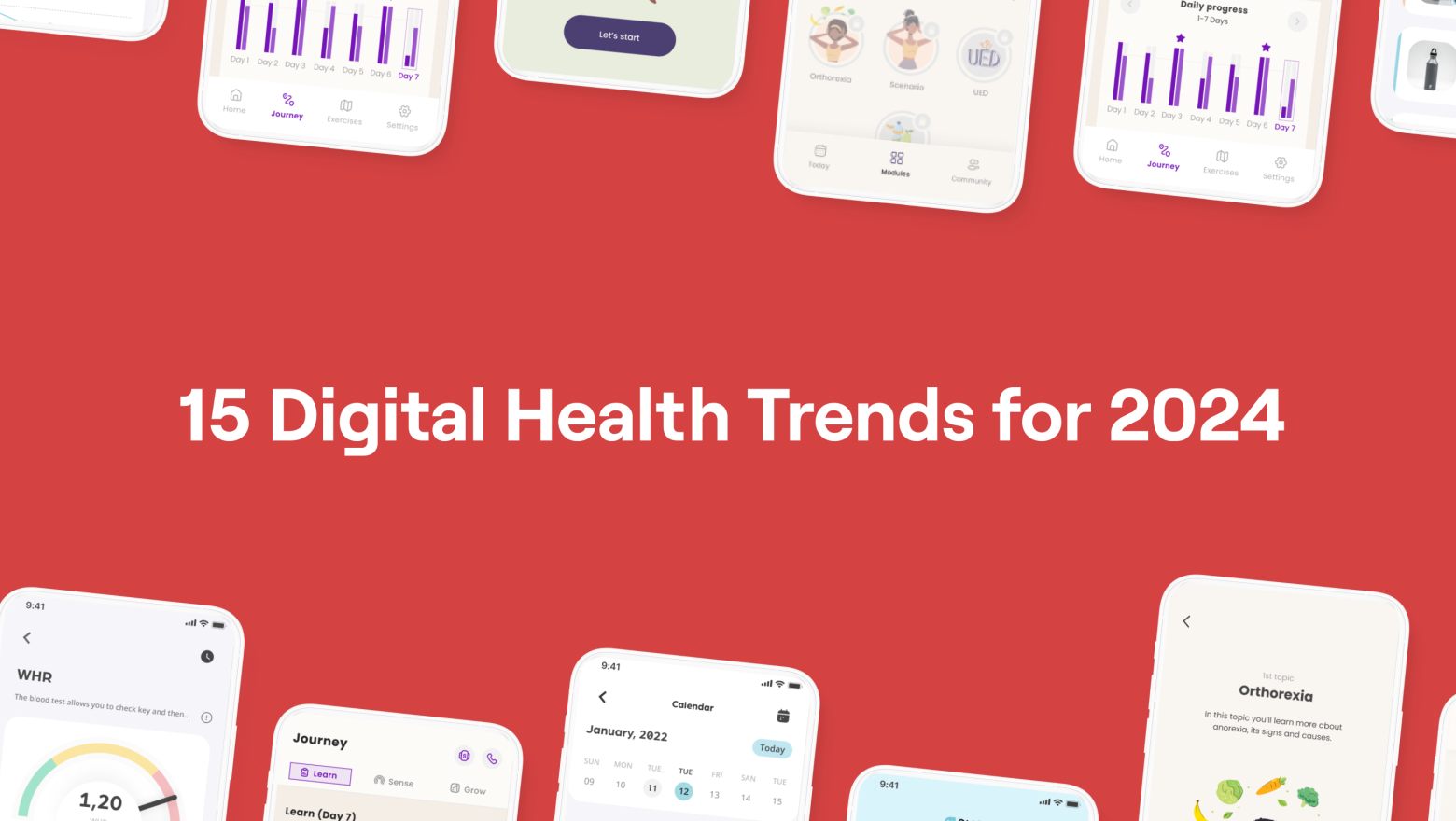2020 has acted as a catalyst for numerous changes across the healthcare and wellness industry. For example, health conditions that require a wearable device: stress, sedentary lifestyles, overeating, limited access to high-quality fresh produce and medical services, and other factors have ultimately compelled individuals to pay more attention to their health and adjust their lifestyles.
One of the key growth factors in the medical technology industry from 2020 to 2023 has been the category of wearable devices. According to current forecasts, sales of smart devices are expected to approach 380 million units by 2025. This market segment is steadily growing, and the aim of this article is to delve into its internal dynamics and explore the prospects of using wearable health devices in the healthcare industry.
Whether you are a healthcare professional with a long-nurtured concept for a medical product or a startup founder waiting for the right moment to present an innovative wearable device idea to investors, now is the opportune time to do so!
Read on to understand why wearable healthcare technologies are crucial today, explore the market landscape, and discover the resources you might need if you decide to move forward with your project.
By the way, before we dive into our article, for keeping track of emerging technology trends in the healthcare industry, you can explore our selection of 100 resources (books, guides, websites, and influencers) about Product Management, UX, Technology, Healthcare market trends, and Product Marketing.
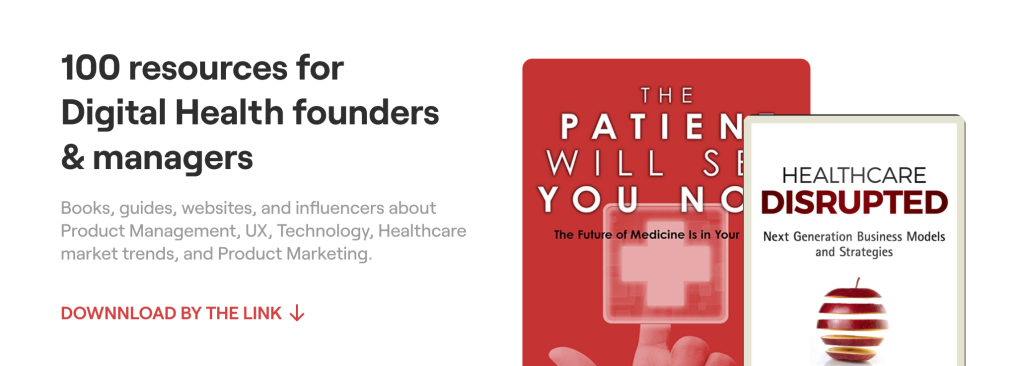
Download List of 100 resources for digital health startup founders & managers
What is Wearable Technology in Healthcare?
Wearable technology in healthcare represents a groundbreaking fusion of advanced electronics and medical science, ushering in an era where personal health management transcends the confines of traditional healthcare settings. Such innovative devices, ranging from smartwatches and fitness trackers to specialized medical wearables, redefine the way individuals engage with their well-being.
The crux of wearable technology for health monitoring lies in its ability to seamlessly integrate into everyday life, acting as a continuous health companion. Equipped with an array of sensors, these devices enable real-time monitoring of various physiological parameters, empowering users to proactively manage their health.
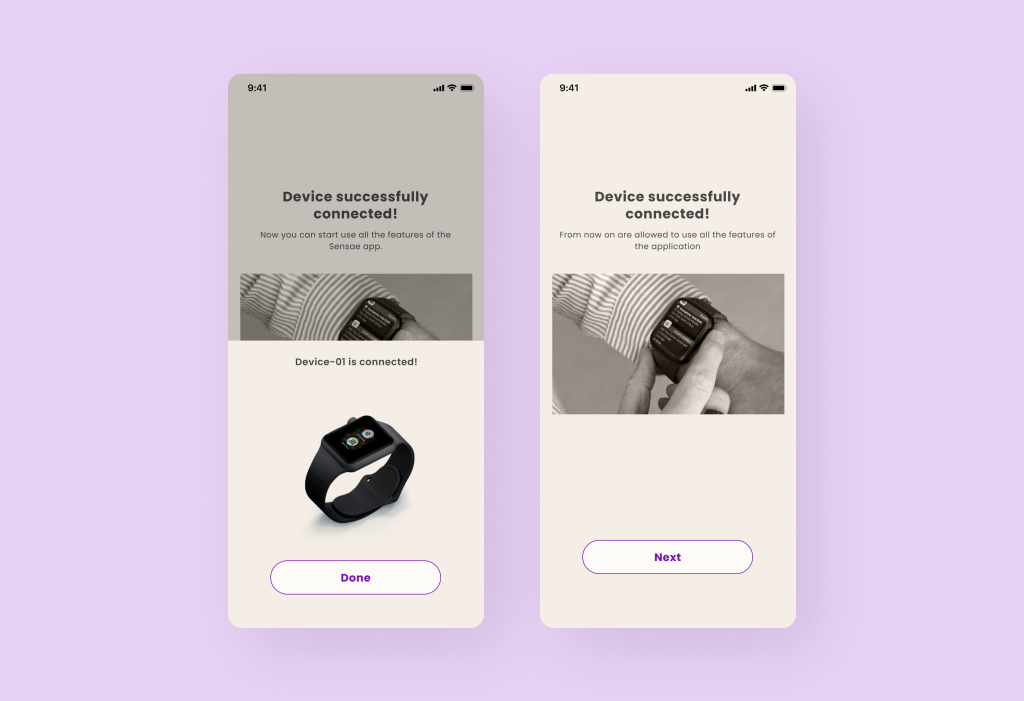
Health monitoring wearables, encompassing a diverse range of functionalities, empower individuals to take control of their wellness journey. From basic activity tracking to more advanced features, these devices serve as indispensable tools for those seeking a holistic approach to personal well-being.
Within this technological landscape, wearable health monitoring devices play a pivotal role, offering comprehensive insights into vital signs, activity levels, and specific health conditions. Marriage of technology and healthcare has given rise to wearable health devices designed to cater to a myriad of needs, from general wellness to the intricacies of managing chronic illnesses.
In exploring what wearable technology is in healthcare, it becomes evident that these devices not only collect data but also foster a proactive approach to well-being. The future of wearable technology in healthcare promises a seamless integration into daily life, providing continuous health monitoring and personalized feedback.
In the subsequent segments of this comprehensive guide, we will unravel the benefits of wearable technology in healthcare, delve into the challenges surrounding its widespread adoption, and explore the exciting realm of predictive health monitoring.
Benefits of wearable technology in healthcare
Wearable technology in healthcare transcends mere gadgetry, offering a multitude of benefits that extend far beyond conventional expectations. Let’s delve into some key advantages that underscore the transformative impact of these devices.
For B2B:
1. Elevated User Interaction
Enterprises incorporating health apps seamlessly with wearables can cultivate and sustain a more actively involved user community. Such amalgamation of gamification elements, real-time monitoring, and individually tailored insights offered by wearables constructs a compelling user journey, fostering heightened involvement and interaction with the application.
2. Optimal User Retention
The next impact of wearable technology in healthcare plays a pivotal role in maintaining user enthusiasm by delivering continuous feedback and ongoing progress updates. Attaining daily step objectives, surpassing calorie expenditure targets, and enhancing sleep quality evolve into significant milestones that consistently captivate users in their pursuit of improved health.
3. Insightful Decision-Making through Data:
Aggregated and anonymized health data sourced from wearables presents an invaluable resource for extracting insights into prevailing health trends and behaviors. Such an approach facilitates the ability to introduce features with precision or address deficiencies grounded in the most accurate data analysis available—acknowledging that the user’s physiological data remains a reliable source for decision-making in the realm of health applications.
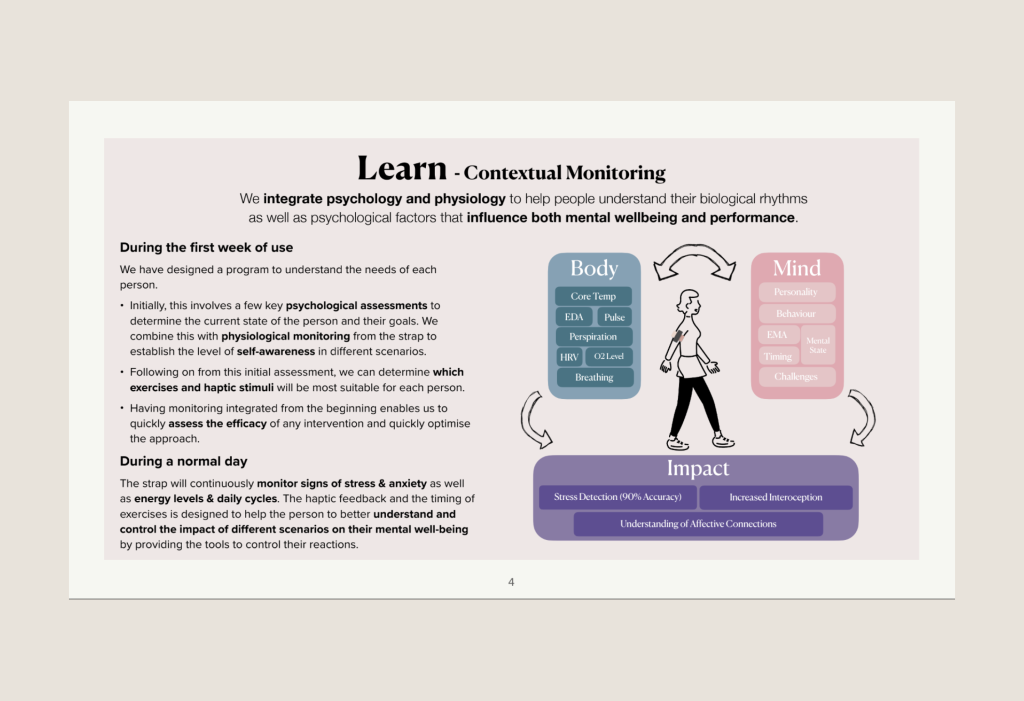
For B2C:
4. Dialing in Athletic Training
Wearable technology in healthcare serves as an invaluable ally for fitness enthusiasts and athletes alike. Gone are the days of generic training routines; these devices provide real-time data on various metrics, enabling individuals to fine-tune their athletic training with precision. From monitoring heart rate to tracking performance metrics, wearables become personalized coaches, helping individuals optimize their workouts for maximum effectiveness.
5. Helping People Reach Their Personal Health Goals
At the core of wearable technology’s prowess lies its ability to align with individual health aspirations. Such devices are not one-size-fits-all; instead, they adapt to users’ personal health goals. Whether it’s weight management, improved sleep, or enhanced overall well-being, wearables offer tailored insights and actionable data, empowering individuals to make informed decisions that align with their unique health objectives.
6. Much More Than a Pedometer
While basic step counting is a feature, wearables are far more sophisticated than simple pedometers. They encapsulate a comprehensive suite of health-monitoring capabilities, ranging from sleep quality analysis to stress level tracking. Such a multifaceted approach provides users with a holistic view of their health, making wearables indispensable tools for those seeking a nuanced understanding of their overall well-being. Wearable technology mental health applications are also on the rise, allowing individuals to monitor and manage their emotional well-being through these devices.
In essence, wearable technology in healthcare goes beyond the surface, offering a dynamic and personalized approach to fitness, health, and overall lifestyle management. As we navigate the landscape of wearable devices, it becomes evident that their benefits are as diverse as the individuals who wear them, making these technologies catalysts for a healthier and more informed future.
The Transformative Impact of Wearable technology on Healthcare
1. Wearable Technology Paving the Way for Telemedicine Advancements
Wearable technology stands as a powerful catalyst propelling the evolution of telemedicine. The integration of wearables into healthcare practices facilitates remote patient monitoring, enabling healthcare professionals to access real-time data.
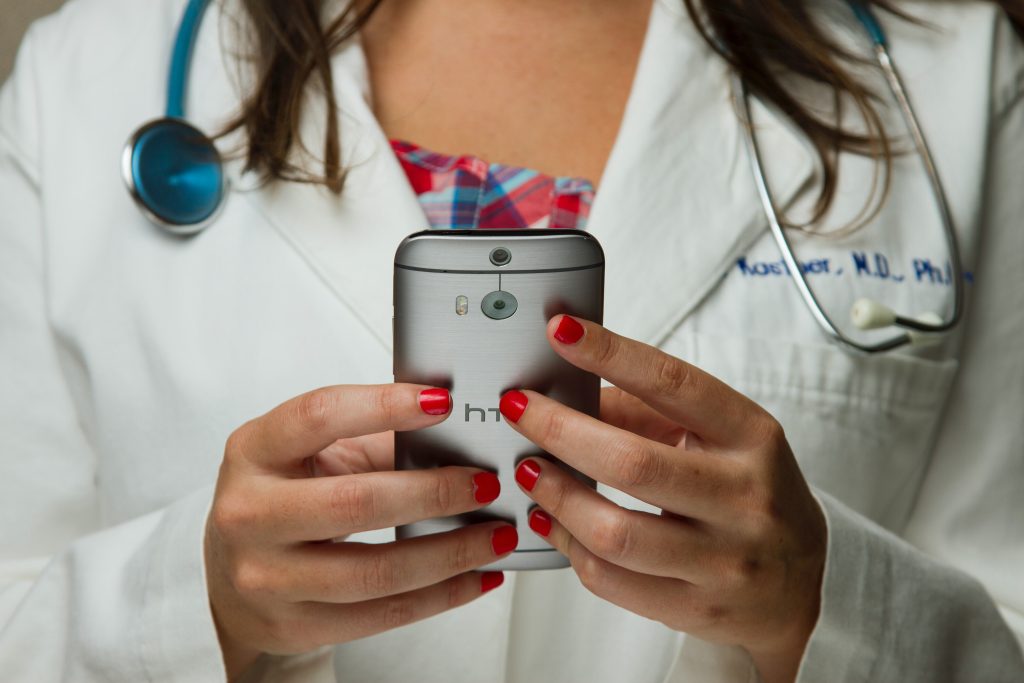
It not only enhances the efficiency of telemedicine but also fosters a more interconnected healthcare ecosystem, bridging the gap between patients and healthcare providers.
2. Easing the Burden on Healthcare Systems
In the landscape of modern healthcare, wearables play a pivotal role in alleviating the strain on healthcare systems. By offering continuous monitoring and proactive health insights, wearables contribute to early detection and preventive care.
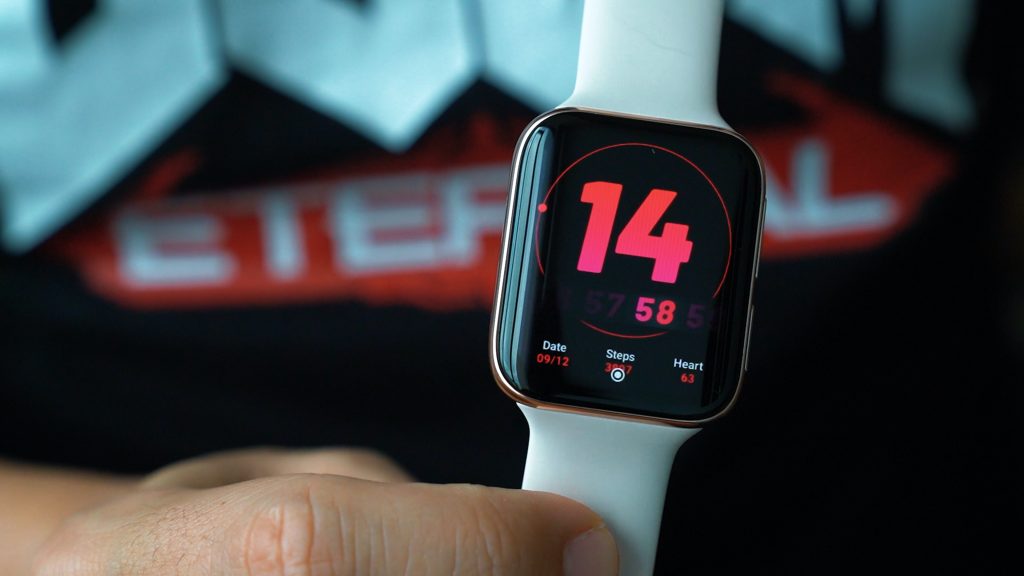
So it helps in reducing the burden on hospitals and clinics, allowing for more efficient resource allocation and improved overall healthcare delivery.
3. Elevating Patient Outcomes Through Uninterrupted Monitoring
Wearable technology and health help each other, because they extend to patient outcomes through the paradigm of continuous monitoring. Wearable devices empower individuals to take charge of their health by providing real-time feedback and alerts.
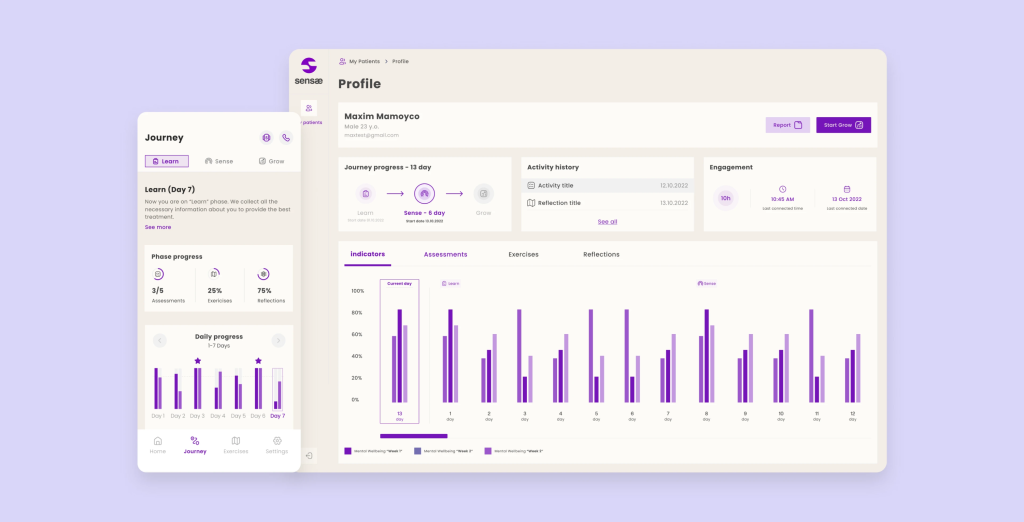
Health monitoring in wearables not only aids in the early identification of health issues but also facilitates personalized interventions, leading to improved health outcomes and a proactive approach to well-being.
The Architecture of Healthcare Wearables
At the software level, every wearable product comprises a physical device (in some cases with wearable health monitors) that connects either to a smartphone app or directly to the cloud through the user’s WiFi router. This secure connection facilitates the delivery of data to a corresponding data processing service, which then forwards it to control applications and a designated location for data storage.
Alternatively, the data can be aggregated and stored locally, awaiting upload to a designated service once a secure connection is established.
A pivotal aspect of a wearable application is the seamless transfer of data. Such devices provide more precise analytics by analyzing user actions rather than thoughts. The application itself optimizes the user-friendliness of handling this data (and devices).
The progression of this process unfolds as follows:
1. Data collection: wearable devices consistently accumulate data from diverse sensors like accelerometers, gyroscopes, heart rate monitors, and GPS modules. This data encompasses information regarding physical activity, sleep patterns, heart rate frequency, and various other metrics.
2. Data transmission: the captured data undergoes transmission from the wearable device to the associated mobile application through wireless technologies such as Bluetooth, NFC, or Wi-Fi. This transmission ensures that the application has real-time access to the latest performance indicators.
3. Data aggregation: once the application receives the data, it undergoes analysis and structuring for subsequent processing. Data parsers, acting as software components, interpret incoming data, extract pertinent information, and format it into a usable structure.
4. Data storage: analyzed data is securely stored in a database or cloud storage. It is imperative to emphasize that health apps must adhere to data security and encryption guidelines to forestall unauthorized access to confidential medical information.
As an example, in the Sensae app that we created, people use health monitoring wearable devices that gather information on their pulse, heart rate variability (HRV), and various other metrics. Bluetooth and NFC facilitated data transmission, while aggregation was achieved through a parser.
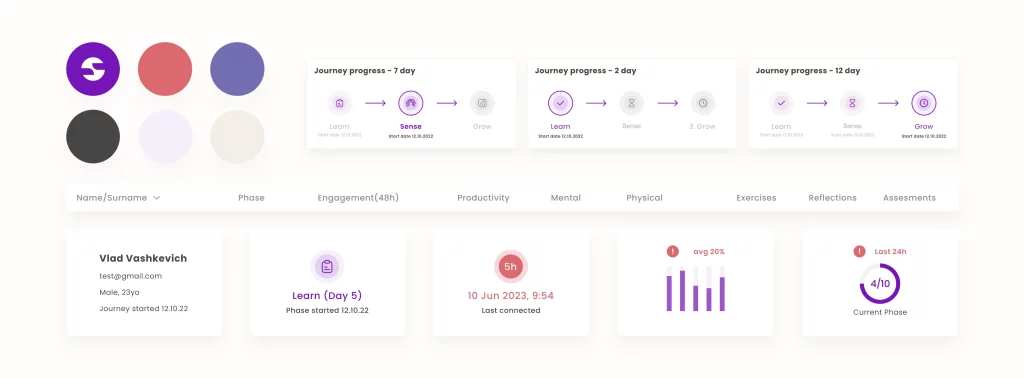
Read case how to build AI health platform with wearables
Tech Stack: The Heart of Healthcare Wearable Innovation
Here we should choose the right technologies for personal health monitoring devices.
1. Data management & storage solutions: Microsoft SQL Server, Structured Query Language, MongoDB, Postgresql, Oracle DB, Apache Cassandra, Apache Hive, HBase
2. Virtual server environments: Amazon Web Services, Microsoft Azure, Google Cloud Platform, Ocean Digital
3. Connection: BLE/Bluetooth, Wireless Fidelity, 4G/5G Technologies, Zigbee Protocols, Long Range Wide Area Network, Ultra-Wideband, Near Field Communication
4. Real-time data handling: Message Queue, Apache Kafka, Storm from Apache, Flink by Apache, Streaming with Spark, Kinesis by Amazon, Event Hubs by Azure
5. Client-Side Development: Markup Languages, Angular Framework, Vue.js, React Library, Backbone.js, Next.js, Ember.js
6. Operating systems for smart devices: Operating System by Apple, Google’s OS, Cross-Platform Development with Xamarin, Native Apps with React, Apache Cordova, Progressive Web Apps, Google’s UI Toolkit Flutter, Ionic Framework
7. Server-side languages and frameworks: Dot NET, Java Programming, Python Scripting, JavaScript with Node.js, Go Language
8. Data analysis tools: Redshift by Amazon, Cosmos DB by Azure, Stream Analytics on Azure, Cassandra DB, Hadoop’s HBase, Apache Hadoop, Apache Spark
Navigating the Challenges of Wearable Health Technology
1. Healthcare will need time to catch up
Ensuring the success of a medical wearables devices program within a healthcare environment requires seamless integration into healthcare delivery systems, readily available technical support, and a straightforward reimbursement process through insurance or alternative channels. These are just a few of the challenges highlighted in a study conducted in 2021.
As these innovative devices become more prevalent, the healthcare sector needs time to catch up and effectively incorporate wearables into existing systems. Patience becomes a crucial virtue as stakeholders navigate the transition, ensuring a seamless fusion of technology and healthcare practices.
2. Equity concerns
Amid the surge in wearable devices in healthcare, concerns related to equity emerge prominently. Access to these devices, particularly for economically disadvantaged populations, becomes a focal point.
Or another situation that we should resolve: in a study conducted in 2017, it was discovered that fitness trackers exhibited a higher rate of inaccuracies, particularly among participants with darker skin tones, among other variables. Interestingly, the Apple Watch demonstrated the highest precision in measuring participants’ health data, while the Samsung Gear S2 displayed the greatest deviation in data accuracy.
Bridging the digital divide and ensuring that the benefits of wearable health technology are accessible to all segments of society necessitate strategic interventions and inclusive policies.
3. Eating disorders
Studies involving college women have indicated a correlation between the usage of wearables and a rise in disordered eating and exercise behaviors among individuals predisposed to such tendencies.
The rise of the wearable healthcare device brings to light a nuanced challenge: the potential exacerbation of eating disorders. As individuals engage with health metrics, there is a risk of fostering unhealthy relationships with food and exercise.
Navigating this intricate landscape requires a delicate balance, emphasizing responsible design and user education to mitigate any adverse effects on mental health.
4. Data Privacy and Security in Wearable Technology
While certain companies, such as Apple, implement stringent privacy controls for their users, a review article from 2021 highlighted a significant gap in research regarding the security, data rights, and ethical considerations of digital health technologies, including wearables.
The data generated by wearable health monitoring devices introduces a critical challenge – ensuring robust data privacy and security. With personal health information at stake, users must trust that their data is handled securely.

Striking the right balance between data accessibility for healthcare professionals and safeguarding individual privacy becomes paramount, demanding continual advancements in security measures and regulatory frameworks.
Wearable technology mental health solutions are also gaining traction, with devices designed to monitor and manage emotional well-being. However, these applications also face similar challenges related to data privacy and security, highlighting the need for robust safeguards in this emerging field.
The Future of Wearables in HealthCare
In its nascent stages of development, wearable medical technology is undergoing constant refinement. With each innovation that surfaces, consumer adoption and healthcare professional familiarity steadily increase, foreshadowing an undeniable growth in both the quantity and influence of wearables in the foreseeable future.
Simultaneously, industry players must grapple with enduring challenges to pave the way for widespread acceptance and the optimal utilization of healthcare wearables.
Such persistent hurdles encompass apprehensions among consumers regarding data security, the imperative for physicians to fully trust the reliability and practicality of the information provided, and the complex landscape of cybersecurity and regulatory risks. Tackling these issues head-on will be instrumental in realizing the full potential of wearable medical technology.
By the way, if you want to learn about the integration and app development of wearable technology for health monitoring, familiarize yourself with our concise and step-by-step article.

We hope this article was useful for you!
Who we are? We are a digital health product studio, who transforms healthcare digital experiences and sets new standards for delivering digital healthcare in a way that positively impacts people’s lives.
We assist healthcare startups in designing and developing digital products, while also helping healthcare organizations undergo transformative changes.
If you are interested about our experience check our portfolio with case studies by the link or you can read more about us here.
And write to us now on m@nozomihealth.com and we will discuss how we can help ensure that your product brings real benefits.


